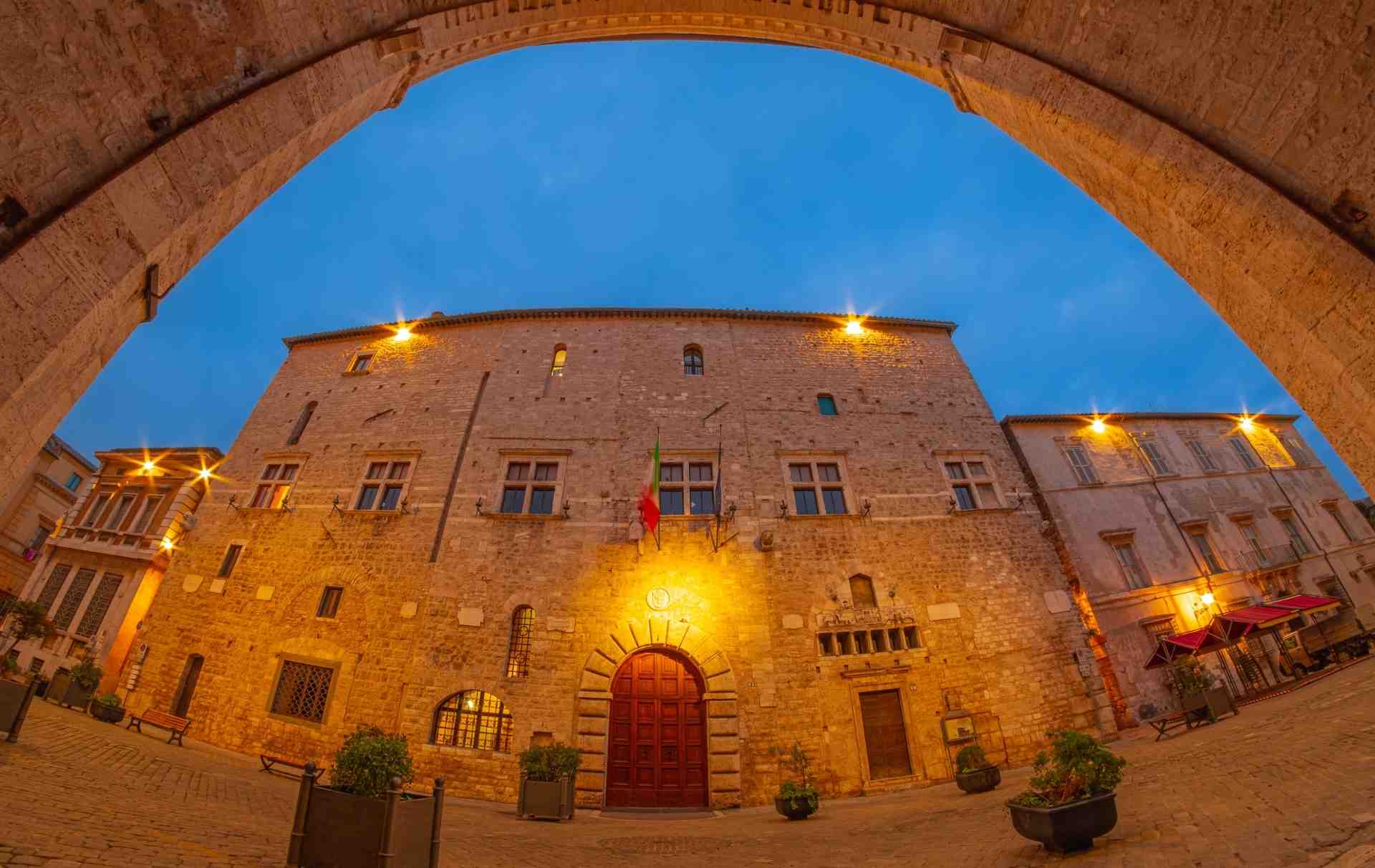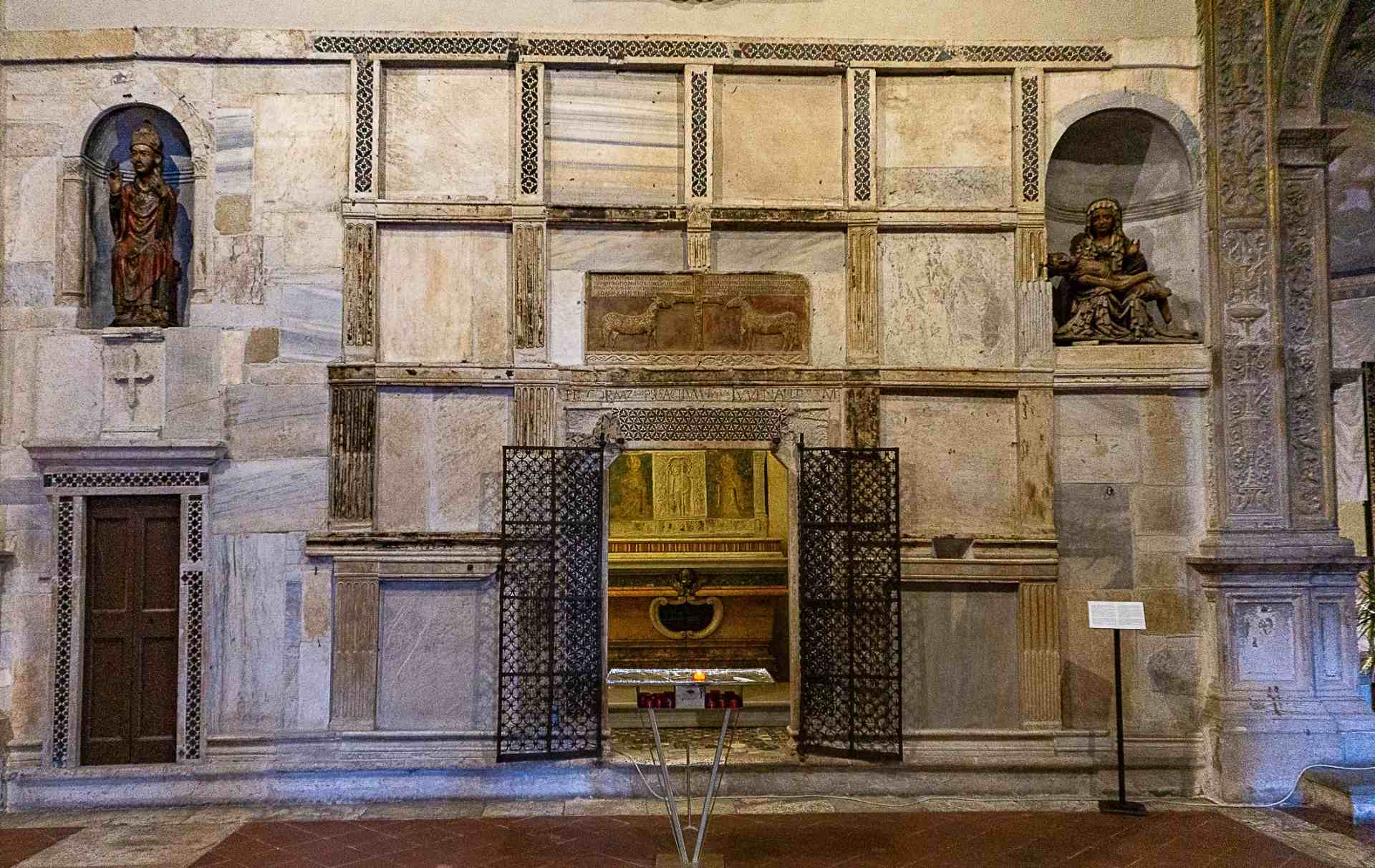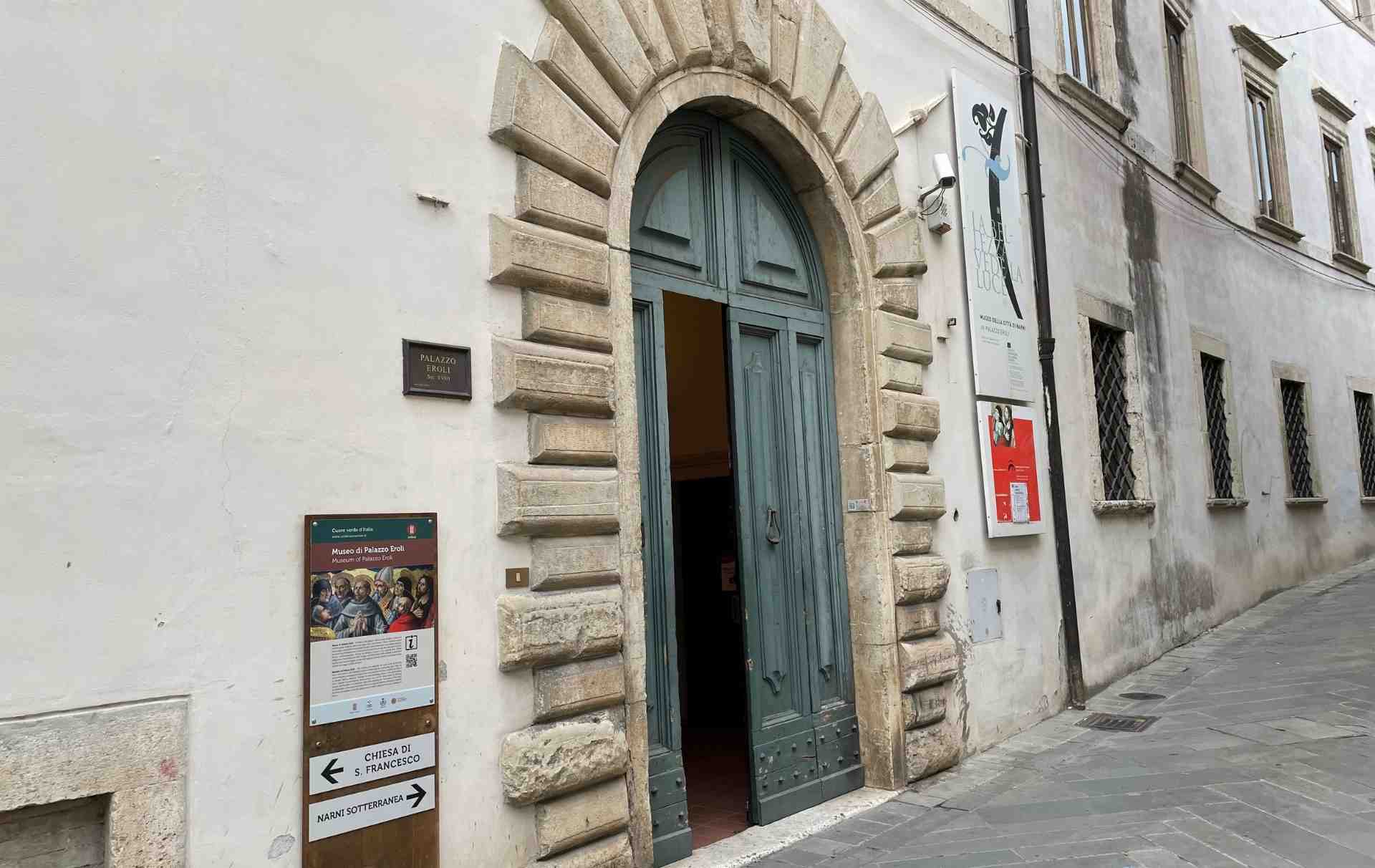Ternana Gate, a medieval door, is one of the principal entrance to the medieval walls of the town of Narni. The gate is mentioned in the municipal statutes of the 1371 as de Arvoltis (i.e delle Arvolte), maybe for the numerous curves that you need to cross to reach it going up the slope along the Via Flaminia.
The Ternana Gate: a bastion to defend the city walls of Narnia.
The gate was built between 1471 and 1492 in the current structure.
It’s characterized by an arch and ashlar jambs and it’s defended by two towers, plus one on the side.
At the time was a fortificat bastion in the area where the east walls of the city of Narni did a corner with the side which goes up until the Fortress built by the Cardinal Egidio Albornoz a little over a century earlier.
Inside of the towers, fitted with fire vent slots, there were semicircular rooms which were used by the soldiers of the garrison that defended it.
In 1846, on the actualization of a road project which included the actual Piazza Garibaldi, and completed the axis with the Romana Gate, Porta Ternana was elevated of seven romans feet.
In 1940 circa some stones, which were placed not far away, were uprooted to permit the passage of the heavy vehicles.
On the top of the door there is the coat of arms with the griffin, symbol of the town of Narni.

Ternana Gate
Via Roma, 112 – 05035, Narni
The Ternana Gate, historical monument of Narni, can be reached along the old town, via Roma and it’s one of the most important structures of the old town of Narni.
To reach the Ternana Gate, leave your car at the Suffragio Car Park and take the elevator to Via Roma.
Discover Narni.
Continue to walk with us inside the old town of Narni and discover the next stop of our Medieval Umbria.
Or discover interesting points of Narni and of its territory.

Municipal Palace
The Municipal Palace, is in front of Priori Palace and, with its mole, the homonymous square in the center of Narni. The Podestà Palace, today

The right aisle, the fourth aisle and the Sacello of San Giovenale
One of the particularities of the Cathedral of Narni is the presence of two aisles instead of one. The right aisle continues with that birthed

The history of Eroli Palace
The history of Eroli Palace, actual headquarter of the museum, of the art gallery and of the municipal library of Narni, is linked to the


